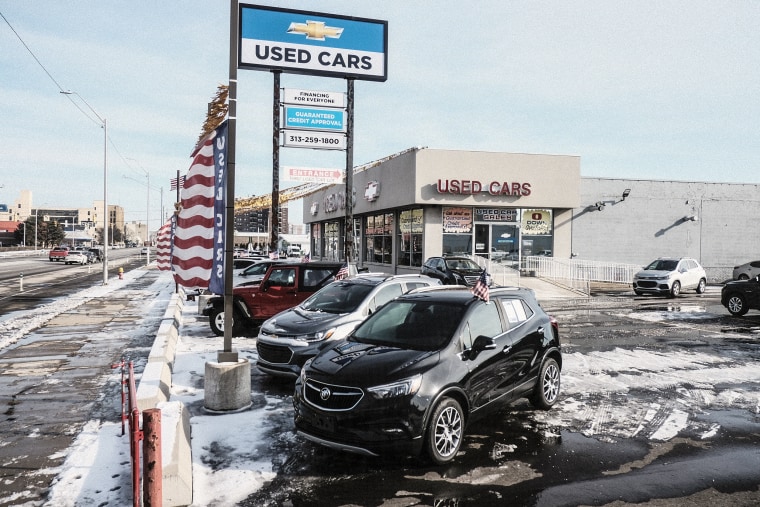The auto industry’s inventory crunch that's been fueling higher sticker prices may lead to the end of bargain buys at car dealerships, analysts said.AutoNation CEO Michael Manley told Bloomberg this week that discounts for new vehicles would not return to prepandemic levels. Instead, the pandemic has shifted the market toward selling new vehicles at prices closer to the Manufacturer’s Suggested Retail Price, commonly known as MSRP.
“What the pandemic actually did was press a reset button on the balance of inventory,” Manley said. “You’ll see some mitigation in terms of margin on new cars, but I really believe that lesson is now embedded, and they will not return, in my view, back to the 2018, 2017 margins.”
Marc Cannon, executive vice president of AutoNation, said Friday that consumer demand remains strong despite low inventories. The industry has adjusted during the pandemic, resulting in a market that may have changed forever, Cannon said.
“The manufacturers and dealers have all learned through this pandemic that overproducing is not a smart thing to do. And that you really need to produce to the level of demand. Discounts in pricing is something that is not going to come back into the marketplace,” he said.
New car prices surged to a record average of $47,077 in December, according to a report from Kelley Blue Book, which was more than $10,000 higher than what the typical customer paid before the pandemic.
Automakers last year battled semiconductor shortages. Other supply chain problems were exacerbated by coronavirus outbreaks that prompted factories to shut down while leaving some showrooms bare. That meant fewer cars on dealer lots and record prices.
Tyson Jominy, vice president of data and analytics at J.D. Power, responded on Twitter to an article with a similar forecast: "New car discounts may never return after the pandemic."
“They will,” he said.
John Murphy, an equity research auto analyst with Bank of America, said Friday that supply chain problems are expected to continue this year and remain a significant issue into 2023.
He disputed that it’s in the best interest of the auto industry to keep inventory low.
“There is nothing the automaker would like to do more than make more vehicles and sell them. There is nothing artificial or anything being held back here,” he said.
Low dealer inventories especially affect buyers who have no vehicle to trade in. They are going to feel it in their wallets, Murphy said.
“You’re going to have a little bit more pain than the person who already owns an asset, being a vehicle, that is going to be traded in to buy a newer used vehicle or a new vehicle,” he said.
On the other side of that, Murphy said, other prospective buyers are getting top dollar for cars they're swapping out.
“The reality right now is that if you own a vehicle, and you want to buy a new one, you’re getting a high value for your trade in. So when you purchase a new vehicle, these high prices are not too bad. They’re not great, but they’re not too bad.”
Cox Automotive forecasts a moderate industry rebound this year in terms of new vehicles produced, to about 16 million vehicles. That's an increase from 14.9 million in 2021. But that figure is still well below auto production numbers before the pandemic.
Americans bought 17.1 million new passenger vehicles in 2019.
Lower inventory has lifted car prices, including those of used vehicles, Jominy said, adding that there have been additional changes that emerged during the pandemic.
“It’s been difficult to produce the cars we need. But at the same time, there’s been a demand shift," Jominy said, adding that demand for SUVs and pickup trucks remain “robust.”
"We’re also seeing more demand for luxury vehicles, which have enjoyed some of their best sales months” during the pandemic.
